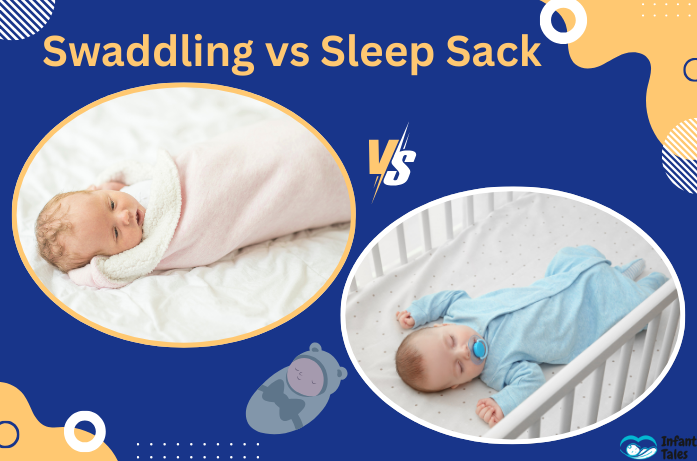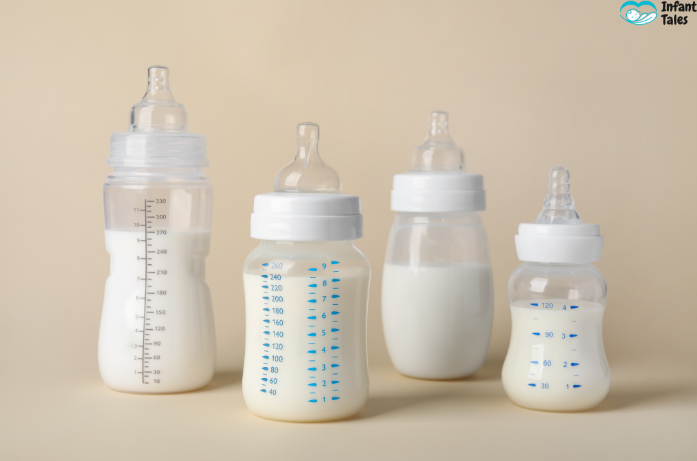By Infant Tales Team
Every parent has experienced how fast babies outgrow their cute little outfits. One moment those tiny onesies fit just right, and the next, they’re already too small. That’s why many parents look for the How to Store Baby Clothes Long Term, whether for future siblings, as keepsakes, or to donate later.
But here’s the challenge: if not stored properly, clothes can develop yellow stains, odors, or even fabric damage.
This guide will show you how to store baby clothes without yellowing, organize them efficiently, and keep them fresh for years.
Why Store Baby Clothes?
There are several reasons parents choose to store baby clothes instead of giving them away immediately:
- Planning for another child: Proper long-term storage for baby clothes saves time and money later.
- Sentimental value: Baby’s first outfit, coming-home clothes, or milestone outfits are priceless.
- Donation or resale: Proper storage ensures clothes remain in excellent condition for others.
Good storage prevents fabric damage, yellowing, and mold growth.

How to Store Baby Clothes Long Term 6 steps
Step 1: Wash and Prepare Clothes Before Storing
Storing clothes without washing is a big mistake. Leftover milk, spit-up, or even invisible stains can cause yellowing or attract pests over time.
Tips for Washing Baby Clothes Before Storing:
- Use a mild, fragrance-free detergent safe for babies.
- Wash according to the care label instructions.
- Treat stains before storage; baby formula or breast milk stains may need an enzyme cleaner.
- Make sure clothes are completely dry before packing to prevent mildew.
Step 2: Sort and Organize by Size, Season, and Type
If you plan to reuse baby clothes, organizing baby clothes for storage now saves effort later, especially if you plan to use the clothes for another child or donate them.
Sort by:
- Size: Newborn, 0–3 months, 3–6 months, etc.
- Season: Summer, Winter, or All-Season items.
- Type: Onesies, sleepers, outfits, jackets, and accessories.
Label each storage container clearly, for example:
- “0–3 Months: Summer Clothes”
- “3–6 Months: Winter Outfits”
- “Accessories: Hats, Mittens, Socks”
Use waterproof labels or a permanent marker.
Step 3: Choose the Right Storage Containers for Baby Clothes
The container you choose can make or break successful long-term storage for baby clothes. Avoid cardboard boxes; they attract moisture and pests. Instead:
- Plastic bins with tight-fitting lids: Keeps out dust, bugs, and moisture.
- Vacuum bags for baby clothes storage: Great for saving space, but avoid for delicate fabrics, as compression can cause wrinkles.
- Acid-free storage boxes: Ideal for heirloom outfits like christening gowns.
Step 4: Add Protective Layers
Adding an extra layer of protection helps keep clothes fresh and safe:
- Acid-free tissue paper: Wrap special pieces to prevent discoloration.
- Cotton storage bags: Allow fabrics to breathe while protecting from dust.
- Silica gel packets: Help control moisture and prevent mold growth on baby clothes in storage.
Step 5: Pick the Right Storage Location
Where you store clothes matters:
Avoid basements or attics: humidity and temperature changes damage fabric.
Avoid direct sunlight: it fades colors and weakens fibers.
Best place to store baby clothes long term: Inside a cool, dry closet or under-bed storage in a climate-controlled room. For professional tips, read Textile Preservation Guide by the National Archives
Step 6: Even after careful packing, check every 6–12 months:
- Look for moisture, mold, or pest activity.
- Re-fold clothes if needed.
- Refresh protective layers if they look worn.
If you spot yellowing, re-wash and treat stains before storing again.
Bonus Tips for Storing Special Items
- Heirloom or handmade clothes: Wrap individually in acid-free tissue and store in a breathable box.
- Shoes and accessories: Clean and store in labeled zip bags inside the main container.
Common Mistakes to Avoid
- Skipping stain removal: Even tiny milk spots can become permanent.
- Storing clothes damp: Leads to mold and odor.
- Using mothballs: Leaves harmful residue and a strong smell; use lavender sachets instead.
Quick Parent FAQs
Q1: Can you store baby clothes in vacuum bags?
Yes, but avoid for delicate fabrics; they may wrinkle under pressure.
Q2: How do I prevent yellow stains in storage?
Wash thoroughly, treat stains, and make sure clothes are completely dry.
Q3: Where should I store baby clothes long-term?
A cool, dry closet in a climate-controlled room is ideal.
Q4: How long can baby clothes last in storage?
If stored properly, they can last for several years without yellowing.
Final Thoughts
Storing baby clothes long-term isn’t just about packing them in a box; it’s about preserving memories and making life easier down the road. With these steps, washing, using the right containers, adding protective layers, and picking the right location, you can keep those adorable outfits fresh and ready for your next little one or as keepsakes to cherish forever.
Want more baby organization tips? Visit Infant Tales for practical parenting guides!



